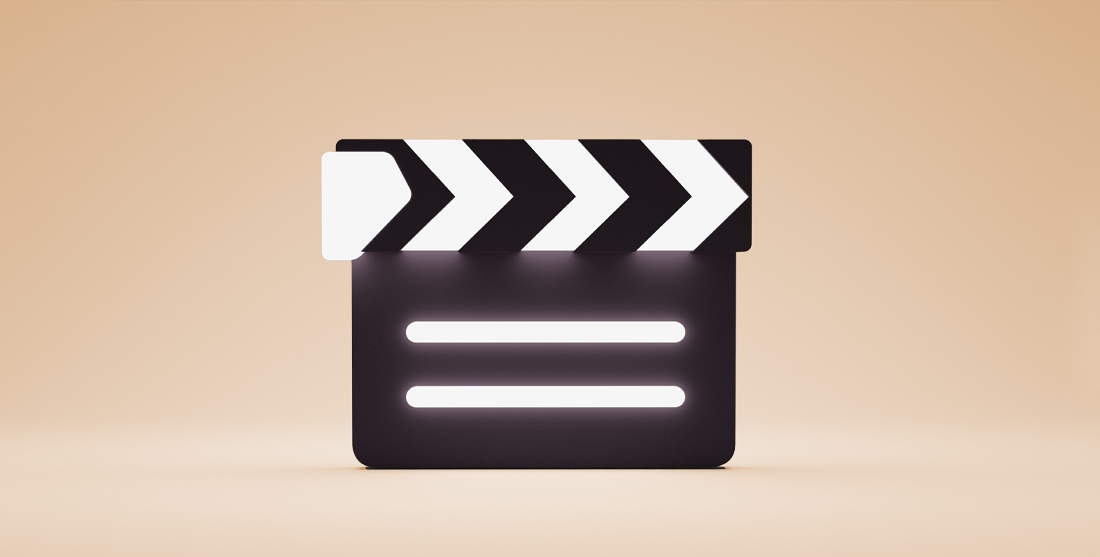Anticipation is the underappreciated engine of ticketing. When used right, it can be a powerful tool to generate hype, build buzz, and sell tickets. Discover the science behind anticipation, Hollywood’s anticipation marketing playbook, and the live event marketing strategies ticketers can use to boost sales and get audiences excited.
Anticipation lies behind every ticket purchase.
Whether it’s for a festival, a play, a conference, or a blockbuster movie, the decision to buy is based on what you anticipate the event to be. The experiences, emotions, lessons you expect to get out of it.
“Anticipation” comes from the Latin “anticipatus”, meaning “taking into possession beforehand.”
This is what we do when we anticipate something. We bring the expected future into the present.
The act of anticipating, of “looking forward” to something, affects our behavior, decisions, emotions, experiences, even our memories.
Anticipation creates the buzz that fuels word-of-mouth marketing. It motivates people to follow and engage with your social media and content, to listen to an artist’s music, or follow the games of a sporting team, or read reviews and share their thoughts.
- Improves wellbeing and excitement while people wait.
- Improves the anticipated experience when it comes.
- Strengthens memories of the anticipated event afterwards.
In Hollywood, anticipation (also referred to as “buzz”) has been proven to make the difference between a smash hit and a flop.
That’s why movie marketers are experts in anticipation. They’ve created a playbook for anticipation building like no other industry.
In this article, we look at that playbook, and the science of anticipation psychology, to reveal the live event marketing strategies you can steal for promoting your ticket onsales.
Table of contents
Would you pay more to kiss your celebrity crush now, or in three days?
When researchers asked this question to undergraduate students, they consistently said the kiss in three days was worth more than the immediate kiss.
These subjects knew that the kiss + waiting was worth more than the kiss alone.
This correlates with ticket purchase behavior. An Eventbrite survey found that when tickets are cheap (1-10 GBP), half of all tickets were bought on the day of the event. When tickets are more expensive (over 50 GBP), half of all tickets were purchased three months or more in advance. And when tickets are very expensive (over 200 GBP), a full 70% were bought three months or more in advance.
These numbers are of course skewed by the fact that onsales typically happen earlier for large events. But they nonetheless show that last-minute purchases are common for cheap tickets and rare for expensive tickets.
In other words, the further the event is in the future, the more likely people are willing to spend large sums on the tickets.
This is because people aren’t just paying for the experience—they’re paying for something to look forward to.
As Maureen Andersen, President & CEO of INTIX, told us:
“You aren’t just buying tickets to The Nutcracker or to Frozen but buying the ‘anticipation’ of joy, family, kids, Christmas, the perfect family outing.”
This is reflected in ecommerce surveys, which show 76% of people get more excited about online purchases they have to wait for in the mail than in-store purchases.
Why is this the case? Why is excited waiting worth more than immediate gratification?
Because positive anticipation makes us feel good. And delaying gratification gives us something to look forward to and get excited about.
Anticipation psychology research shows positive anticipation:
- Improves coping and recovery to stressful situations.
- Activates regions of the brain associated with positive feelings.
- Increases reward-sensitivity (meaning the event is better when it happens).
- Strengthens memories of the anticipated experience after it happens.
In short, when you’re selling tickets to an event, you’re not just selling an experience that happens a month from now—you’re selling them a month’s worth of something to look forward to. And you’re selling all the cognitive benefits that the act of looking forward provides.
The experience plus the excited wait is worth more than the experience alone.
An excited wait can also drive-up intention to spend. One study found the longer people waited in queue, the more they spent on products.
We’ve heard this in reports from our own customers, who’ve found implementing a virtual waiting room increased conversion rate and average order value.
"Because there was a queue, we saw an enormous increase in conversion rates ... People think, 'Now that I’m on the site, I really need to buy something.'"
Joost van der Veer, CEO

Before we dive into the enterntainment marketing strategy and tactics ticketers can use to create anticipation for an event, let’s look at Hollywood’s playbook to see what lessons we can learn.
Movie studios and movie marketers typically rollout movies in the following way:
- The studio announces the movie.
- It then announces the lead actors and actresses.
- Character profile photos are released (or sometimes “leaked”).
- The movie poster goes public.
- A teaser trailer is published.
- Then the full trailer.
- The actors do a press run.
- The second full trailer comes out (sometimes along with full scenes from the film).
- There’s a star-studded premiere.
- Then, finally, the movie is released to the public.
This is a multi-year process. And every single step in the process has the power to generate headlines, social media chatter, speculation, and interest. Every step of the process is designed for awareness, buzz, and anticipation.
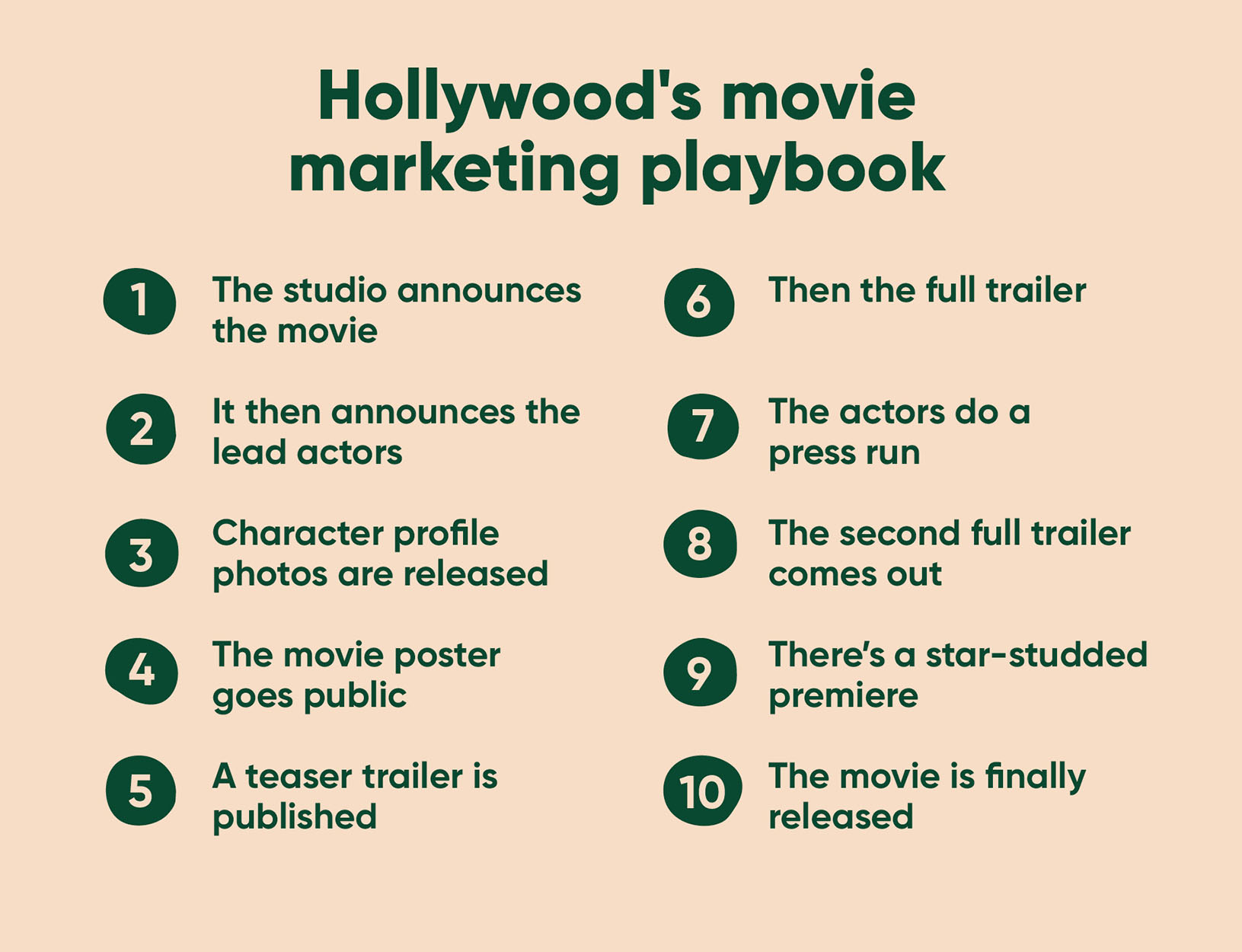
To show how this playbook works, we downloaded three years of worldwide Google Trends data for the search term “Batman” and investigated every spike in interest over that period.
Every one of the interest spike below is correlated with a curated event by the movie studio. And these interest spikes aren’t small either—we’re talking millions of daily searches.
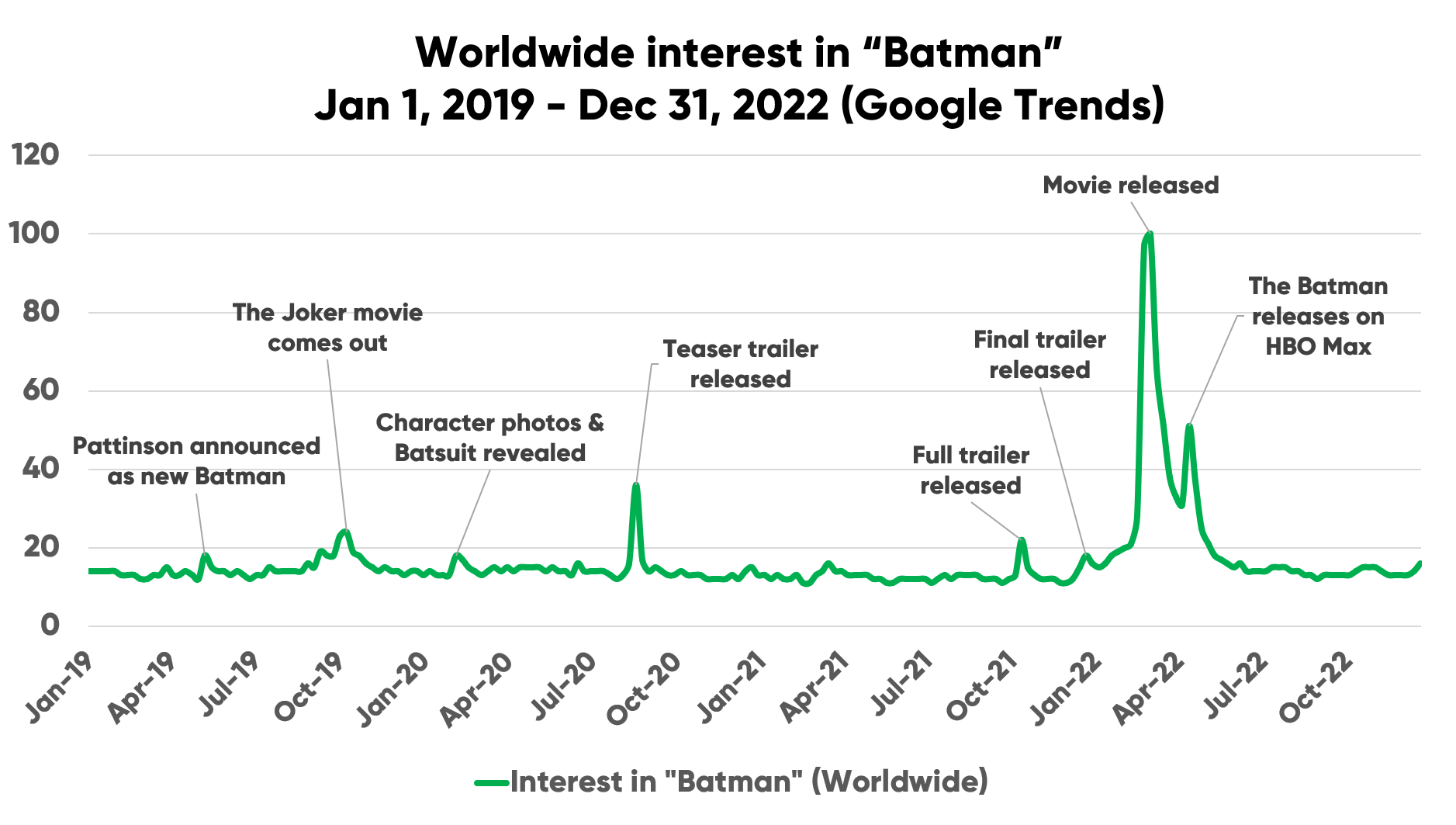
Each of these small reveals and strategies works not only to attract new interest but also to stoke the flames of excitement and anticipation for people who’re already interested.
In recent years, major movie studios have even embraced the post-credit scene as a chance for a first teaser of a sequel. With this, they kick anticipation right back into gear the moment the anticipated film is consumed.
This process reveals 4 key strategies movie studios leverage to build anticipation and buzz:
- Curiosity: maintaining mystery & getting people talking.
- Cadence: playing the long game; giving tidbits of information slowly over a long period.
- Content: giving audiences something to engage with, something to hook their attention.
- Community: encouraging & facilitating community speculation, conversation & interaction through the above three strategies.
Manage high-demand onsales & protect your reputation with 8 proven onsale tips

If you’re a ticketing marketer, or any marketer, the above example may seem irrelevant or tone-deaf. Batman is an internationally famous franchise, Robert Pattinson is a superstar, the film and its marketing department have multi-million-dollar budgets—of course people are going to be interested.
And though ticketers don’t have multi-year lead times on events, multi-million-dollar marketing budgets, or the kind of hype that surrounds blockbusters, they sell the same thing: entertainment, experiences, anticipation, and excitement.
Whether it’s a musician, a play, a sporting match, a festival, or a comedy show—you’re selling tickets to something people are passionate about.
You’re selling these people something to look forward to.
And that makes the lead-up to your event, like the lead-up to the release of a blockbuster movie, your chance to stoke the flames of anticipation, to get people excited.
Here’s the problem: most live event promotion only creates a couple key spikes in interest, which often means only a couple key moments where tickets are sold.
For festivals, 15% of tickets typically sell during the first week, then 24% during the last week, according to ToneDen. That leaves 61% of tickets for the weeks in between—also known as the “maintenance period.”
This means interest in your event likely looks something like this:
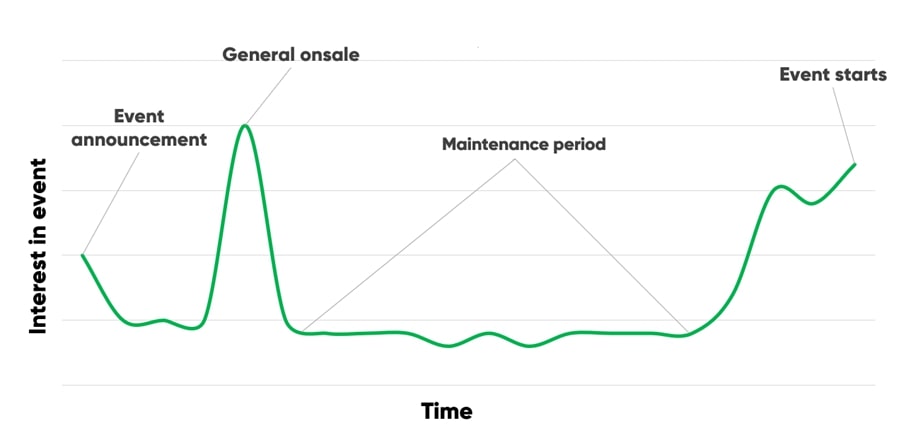
Anticipation marketing is about creating more consistent spikes in interest throughout the event lifecycle. It’s about giving those who already bought tickets more reasons to be excited, and giving those who haven’t more reasons to pay attention and feel like they’re missing out.
Marketing for anticipation is about turning your “maintenance period” into an “anticipation period”, and making interest in your event look more like this:
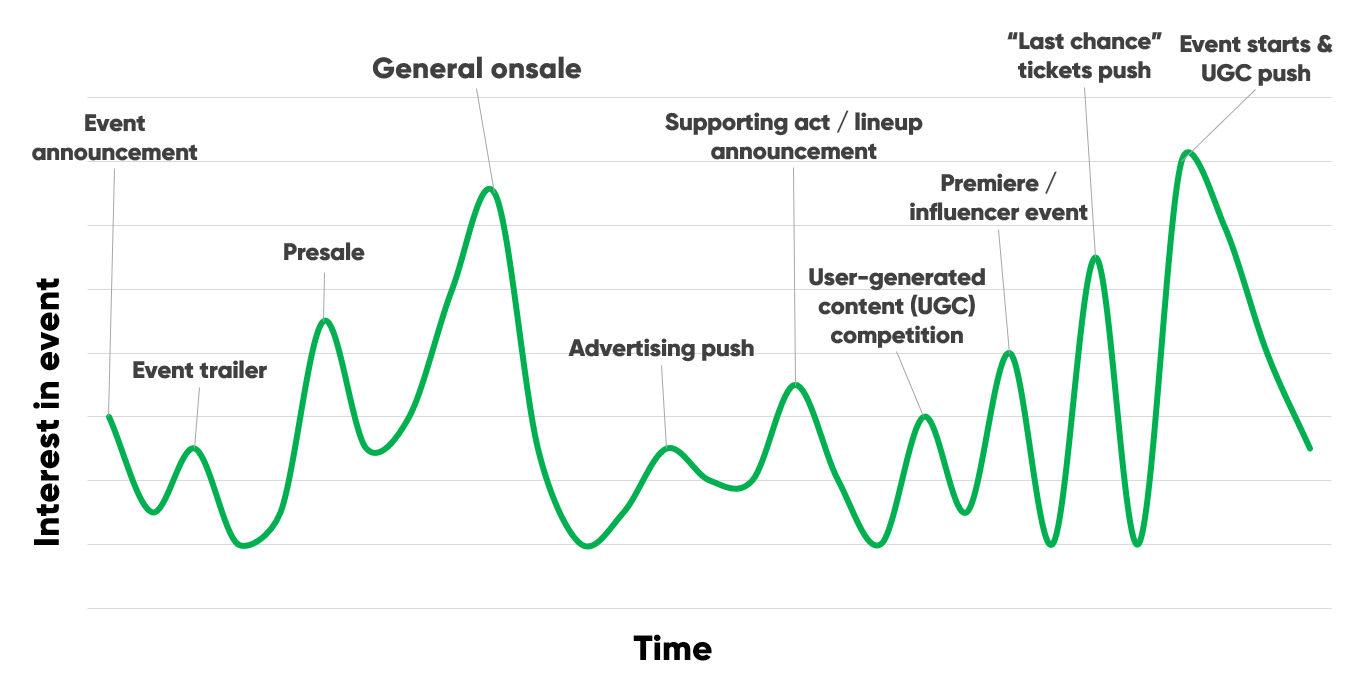
The curiosity gap is the space between what we know and what we want to know.
In Hollywood, it’s the questions teasers and trailers make us ask that only the studio (and eventually the movie) can provide the answers to.
Who wins the fight in Rocky? Why did Jack go insane (and will his family survive) in The Shining? What’s the plot twist in the Sixth Sense, Fight Club, or The Usual Suspects? Who committed the murder any whodunnit murder mystery?
Ticketing is primed to leverage the curiosity gap. Every live event sparks dozens of questions audiences and buyers want answered:
- Who’s the special surprise guest or supporting act?
- Who’ll win the sporting match?
- What songs will an artist play?
- Will the artist play any unreleased songs or teasing their new album?
- Why is this tour the must-see event of the year?
- What’s the lineup for this festival?
The point of leveraging the curiosity gap is to tickle that part of your audience’s brain that needs a question answered.
For long-running plays, or international artist tours, you might tell fans: “Discover the moment from X that has everyone talking.”
For sporting events, you might ask, “Will history be made?”, “Can team X overtake team Y to get one step closer to the championship?”
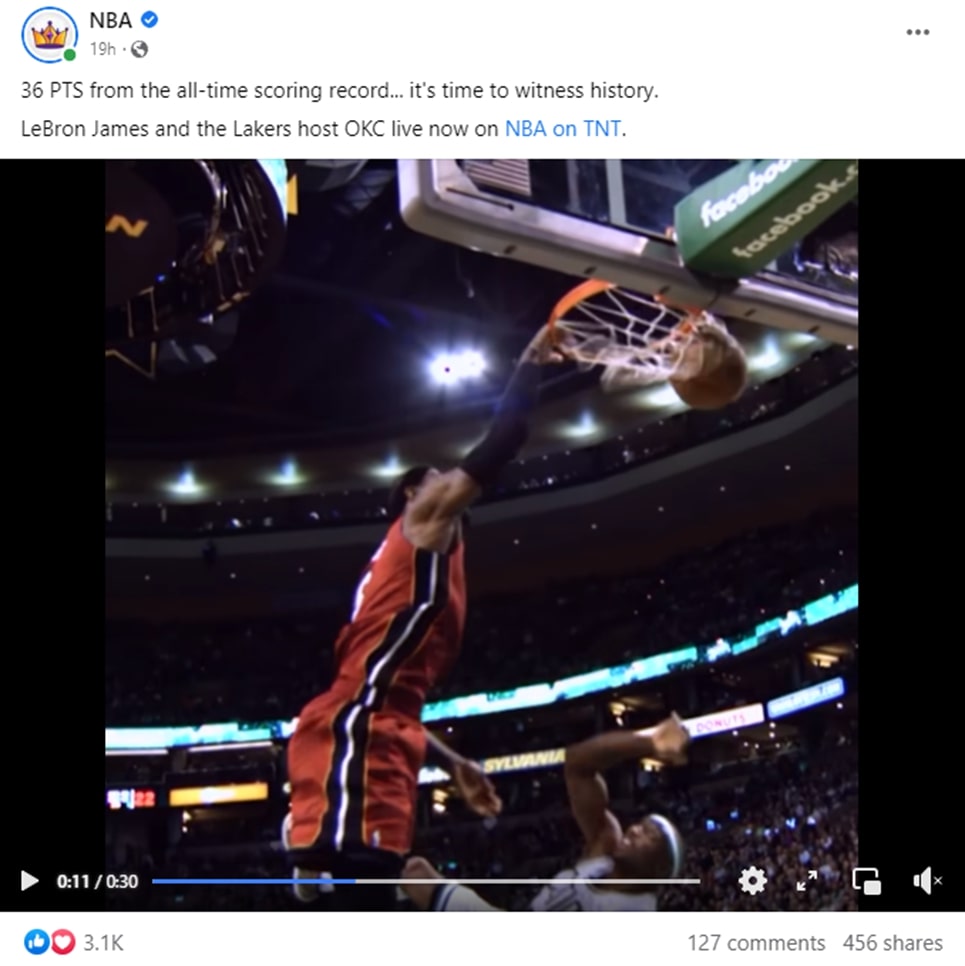
The key idea is to give your audience just enough to spark their curiosity and excitement without spoiling the event. You want to get people talking, spark speculation, and take advantage of the fact that the answers can only be had through you and your event.
What’s been said about your event? What’s happened on the artist’s tour?
Check out some of the headlines below. Surprise guests, unreleased songs, history being made, or even unbelievable concert production, is enough to make headlines, spark curiosity, and move tickets.
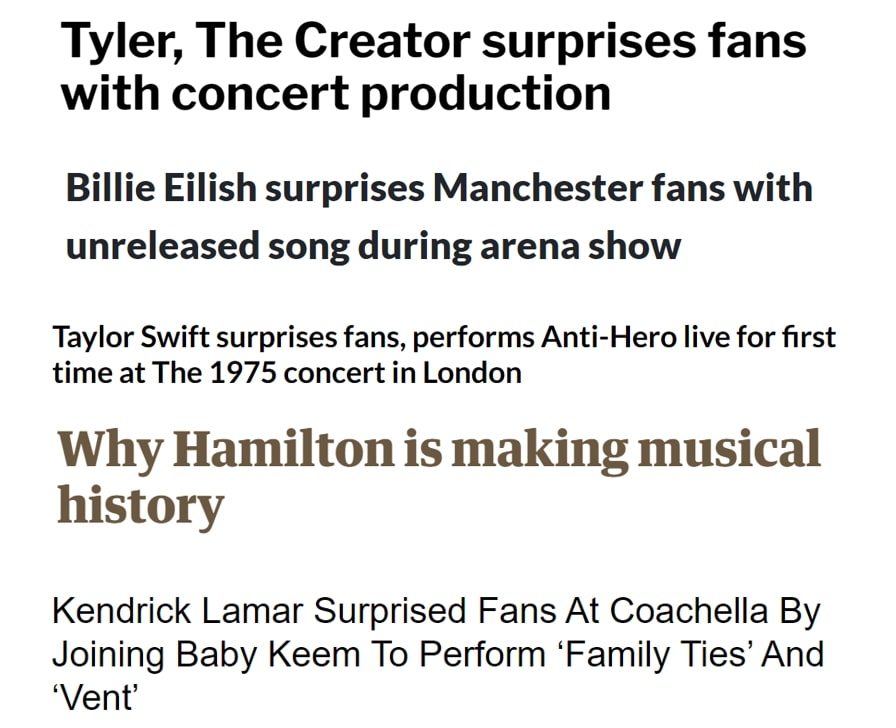
Once you know what fans want to know, the next Hollywood trick is to drip-feed them the answers. Satisfy their curiosity in small batches, while always stoking new interest. You can achieve this by fine-tuning your cadence.
Summary #1 Curiosity: Use your marketing to spark curiosity in audiences that can only be satisfied through attending your event, following you on social media, or subscribing to your newsletter. Consider the big questions audiences have about your event that can only be answered by you or the event itself. Then leverage these in your communications to create intrigue, spark conversations, and build anticipation.
Movie studios are experts in leveraging cadence in their movie rollouts.
Movie marketers don’t play all their cards at once. And neither should ticketers.
For festivals, for instance, the big question is always “What’s the lineup?” or “Who's headlining?”
A great example of teasing the answer to this question is Denmark’s Roskilde Festival, which releases its massive lineup in batches.
In 2022, 16-39 new artists performing at Roskilde were announced monthly across 4 months.
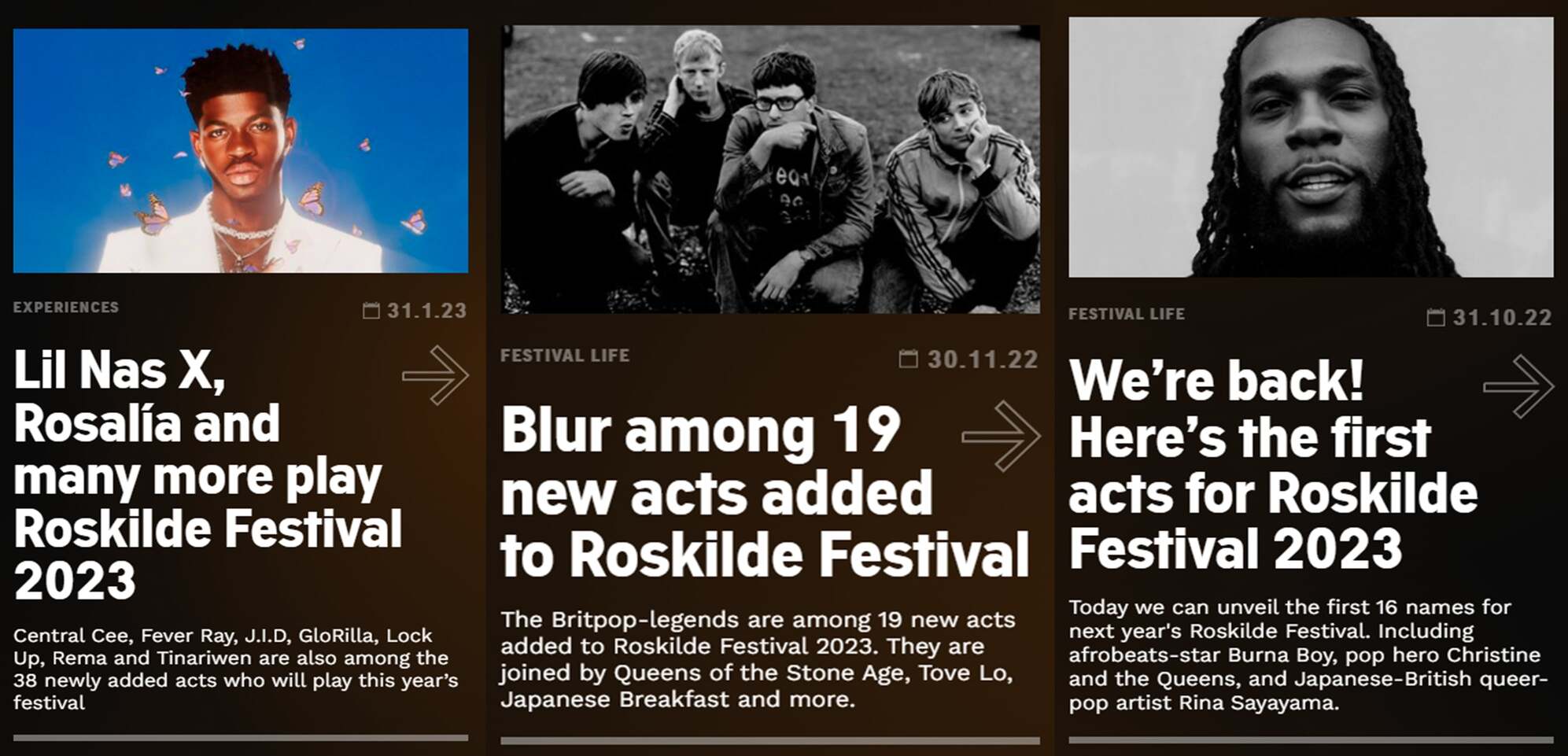
Each one of these announcements makes local headlines, causes chatter, and sells more tickets. This ensures interest around the festival isn’t a one-off spike that quickly fizzles out.
Essentially, spreading out major announcements gives you a reason to keep making major announcements. It makes your newsletter, your social media channels, and your website something people want to keep track of.
RELATED: 8 Proven Tips for a Successful Online Ticket Sale
This attracts the interest of prospective ticket buyers, but it works its real anticipatory magic in existing ticket holders.
Those who already hold tickets to an event are invested in announcements about that event. They’ll want to follow you on social media and sign-up to newsletters. And when you send out this information, it’s existing ticket holders who’re most likely to engage with and amplify it.
For solo concerts, you could replicate this by holding off the announcement of the supporting act, to give another ticket sales push after the initial onsale. Or adding a second show “due to extraordinary demand.”
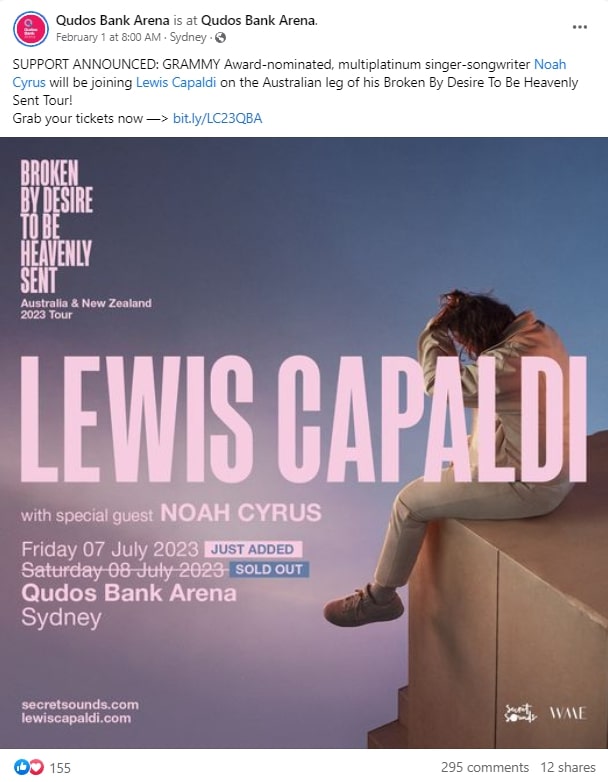
In terms of sales techniques, you can leverage cadence to spread ticket sales out using things like:
- Pre-sales
- Invite-only sales
- Special offers
- Package deals
- Merch bundles
You can also incorporate events countdown timers and timelines so customers can see the event getting closer.

You should strive to give audiences the opportunity to act at all points throughout your staggered announcements. Even if tickets aren’t on sale, you can let fans sign up to be notified. Even if they’re sold out, you should let them sign up to a waitlist.
RELATED: Roll Out The Red Carpet for VIP Customers With Exclusive, Invite-Only Onsales
And the last cadence-based step we can learn from Hollywood comes from the rise of the post-credit scene.
Your customers come away from concerts, sporting matches, festivals on a high, with the event fresh in their mind. Play the long game and use this as an opportunity to create excitement for the next event. You might try messaging like:
- “We can’t wait to see you again next year. Sign-up to be the first to know.”
- “We hope you enjoyed today as much as we did, here’s an upcoming event we think you’ll love.”
- “Thank you for making [event] possible, let us know who you want to see at [event/venue] next time!”
- “Wishing [event] could just keep going? It can! Here’s 5 upcoming shows we can’t wait to see.”
And if you think you don’t have enough material to spread out audience engagement and keep anticipation high, you’re wrong. You just need to focus on your content.
Summary #2 Cadence: Use cadence in your marketing to create more consistent interest spikes throughout the event lifecycle. Don’t reveal everything about your event at once. Don’t sell all your tickets at once. Don’t spend your whole ad budget at once. Play the long game and build anticipation by spreading out major announcements and sales stages.
Content is key to creating anticipation around movies. It’s almost everything people are exposed to around a film that isn’t the film itself.
Trailers, press tours, behind-the-scenes videos, reviews, even premieres.
These are all designed to give people something to consume that isn’t the movie itself, but that gets them excited. They’re all designed to stoke anticipation and curiosity.
For someone who isn’t completely sold on an event or has it in the back of their mind that they might attend, content acts as a reminder, a teaser, a brand touchpoint.
96% of event attendees look for information about the event online before attending.
And consumers are 131% more likely to purchase immediately after they consumer early-stage, educational content.
This makes it crucial you have something to give them, something to show them, for when they look for it. Use your content as both an educational and a marketing opportunity.
RELATED: Here's How To Provide Fair Ticketing Online
Curated playlists
One highly successful trend for musical acts and live events is to create and share curated playlists.
Coachella’s lineup playlist has a massive 190,000+ likes on Spotify, almost as many as can attend the massive event.
They use this popular playlist as a chance to share when their tickets are released.

It doesn’t just have to be festivals either. User created setlists are also hugely popular. The one below for Harry Styles’ 2023 tour, for example, has almost 50,000 likes.

Create something that’s connected to your events that people actually want to engage with.
“You might also like”
Personalization and recommendation algorithms have helped propel streaming services like Spotify and Netflix to massive heights. Who’s to say ticketers can’t do the same?
Your personalization efforts can range from incredibly complex to incredibly simple.
Here’s three examples:
1. Fast-growing ticketing software company DICE allows customers to share their Spotify and/or Apple Music data directly with the platform. It then uses this to notify customers of artists they like playing shows near them.
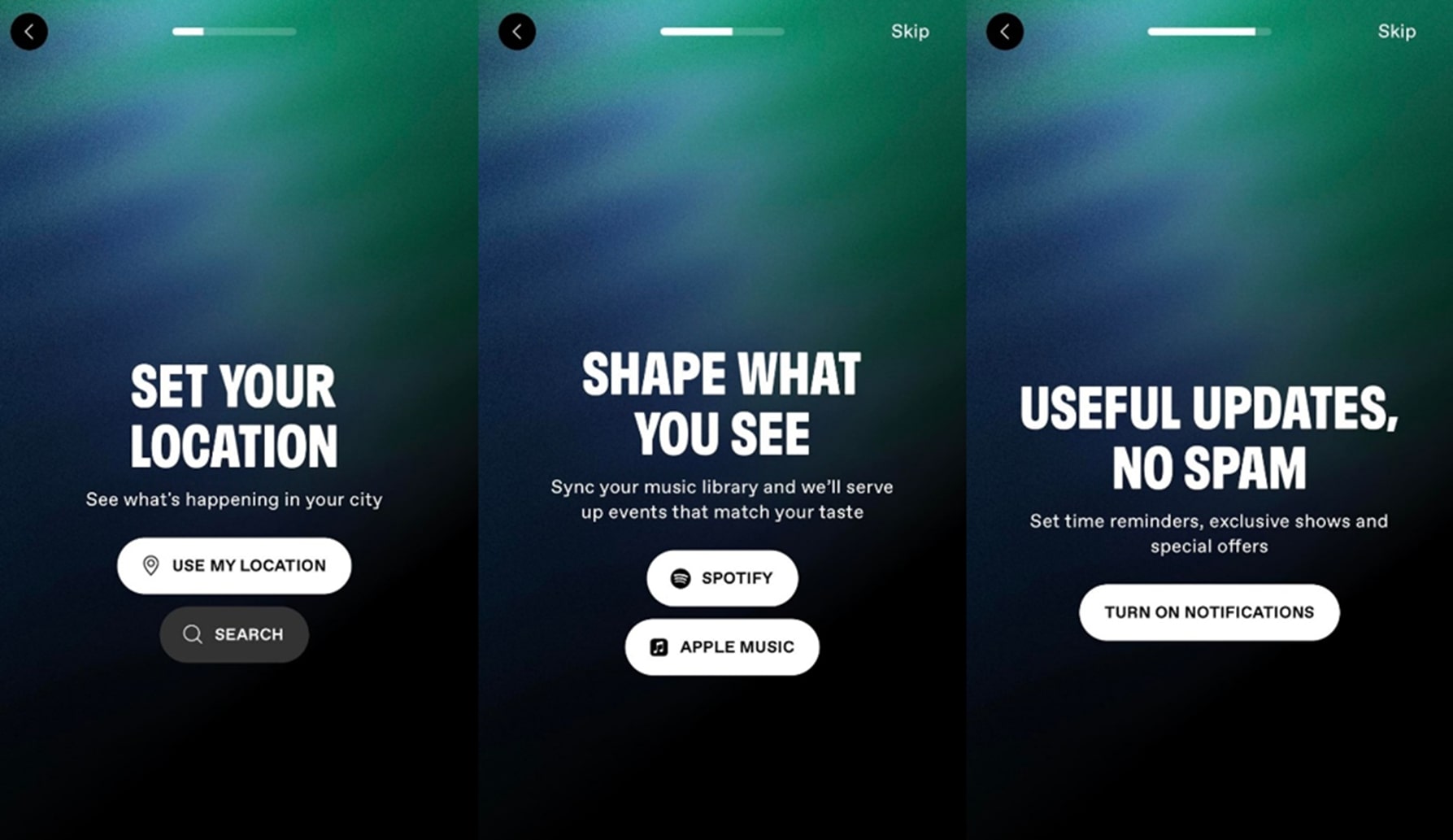
2. Eventbrite’s “interests” section simply associates shows with genre tags and location tags to deliver recommended content.
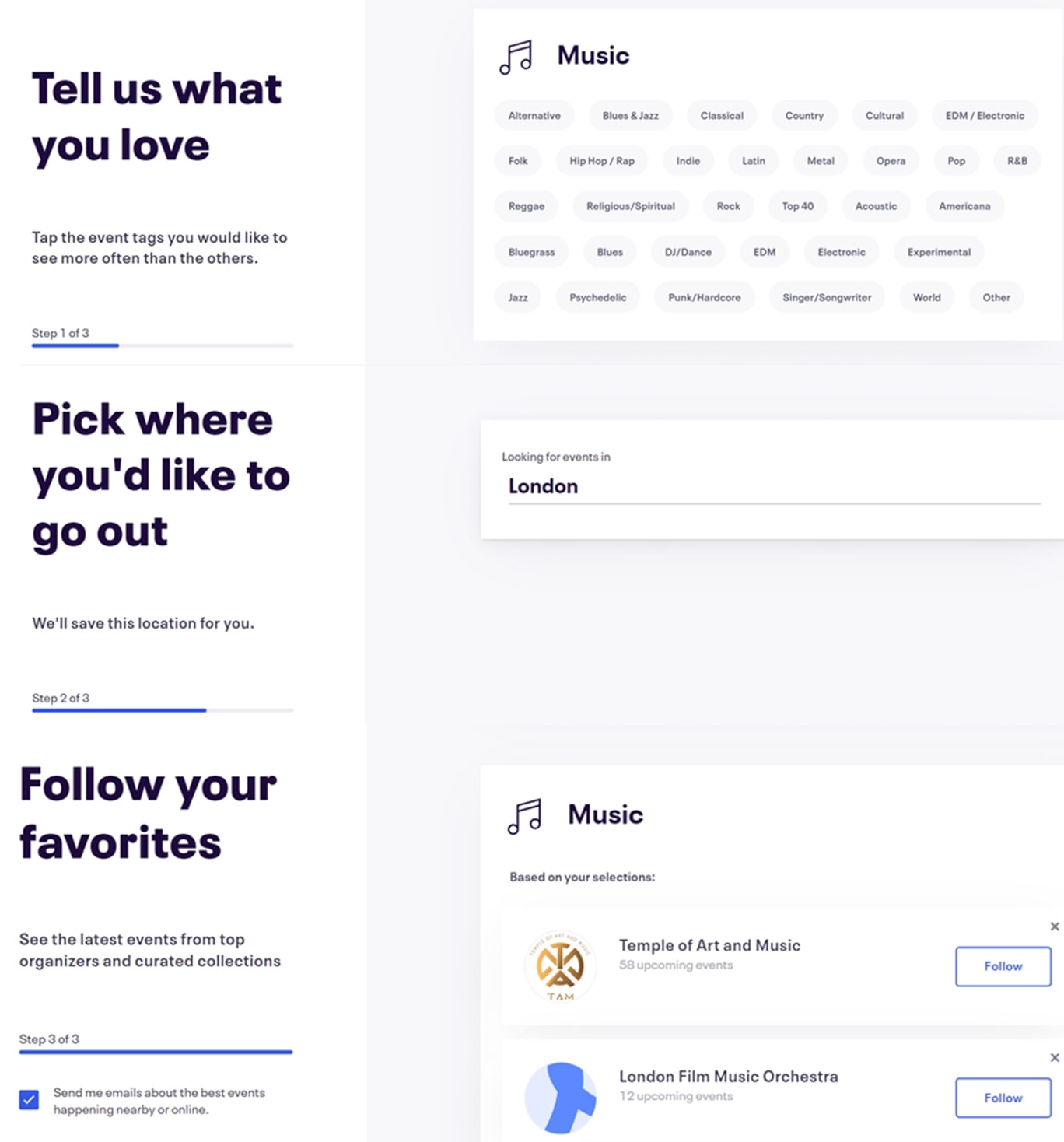
3. Australia’s Laneway Festival offers a solution to those without the tech to make nuanced personal recommendations. In the lead-up to their festival, they made a series of social media posts that simply highlight a headlining act, and then suggests similar artists that are playing at the festival.
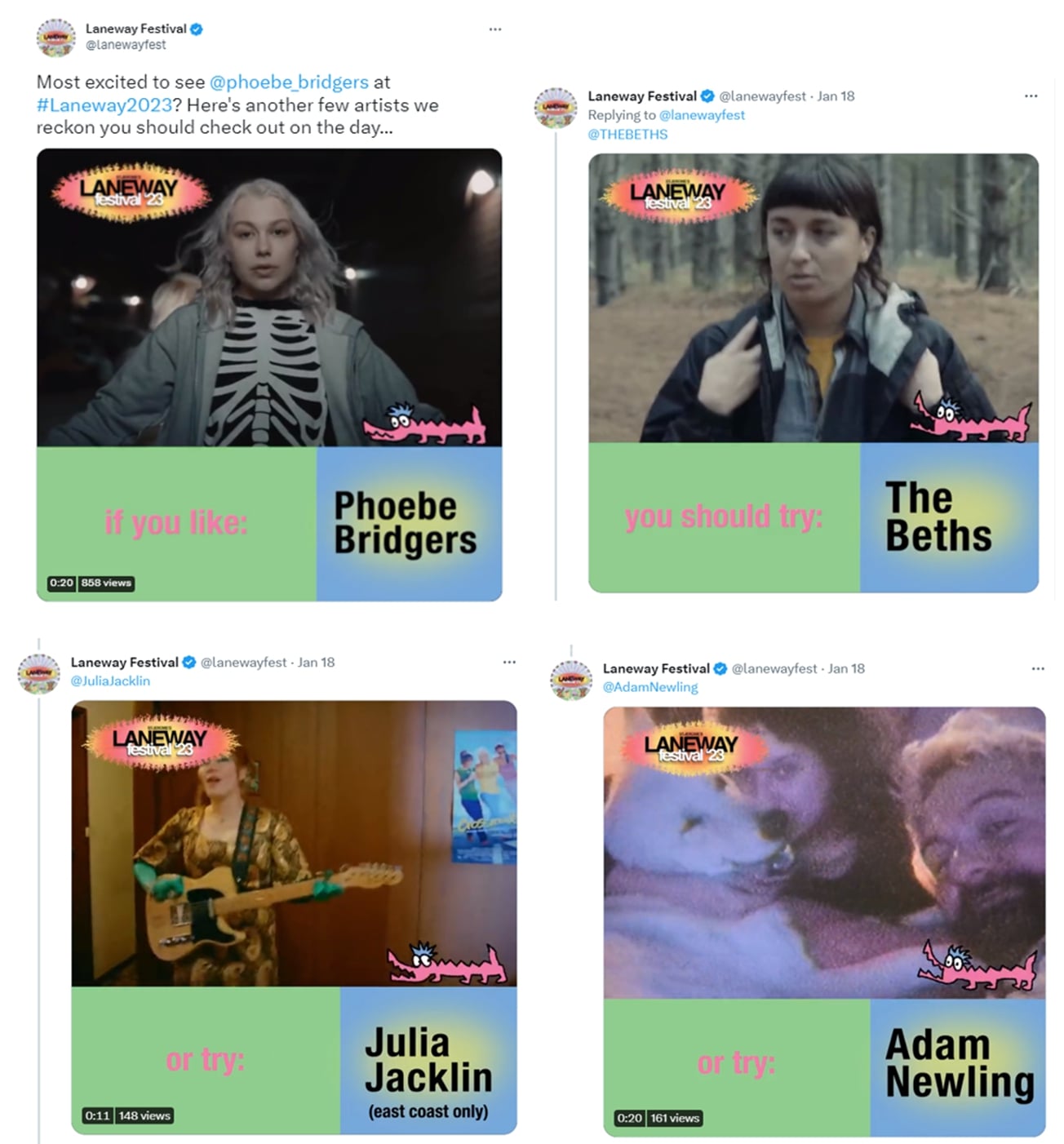
For people on the fence about coming, showing off and exposing them to new artists within their genre could make the difference between attending your festival, and just attending the headlining act’s sideshow. And for people on a post-event high, a well-timed recommendation may be just the nudge they need to book their next event.
Event trailers
Many live events are one-off. Sporting events, festivals, concerts, comedy shows—they happen once, then are done. So ticketers can’t create trailers for events like movie studios do with movies, right?
Wrong.
You can share the laughs of a comedy show with a sample of a comedian’s previous jokes. The energy of a sports stadium with clips from your last event. The excitement and joy of a festival with clips of crowds.
If an artist is playing at your venue, they’ve probably been touring. There’ll be user-generated and official content of their previous performances. Professional shots of their tour and set design.
Leverage and take advantage of these to build excitement and anticipation.
Give audiences a peek behind-the-scenes
Behind-the-scenes content is for your biggest fans. Movie studios release “the making of” videos which give insight into how they built their world, how they chose actors, how directors thought about certain shots.
In the lead-up to your event, you could tease fans with behind-the-scenes content of:
- Set design
- Costumes & outfits
- Rehearsals
- Venue tours
- Interviews with creators and/or performers.
This is an easy way to tease fans and give them something to engage with, while only giving away minutiae of the event.
It also sends the message “We’re getting ready for you!” telling them the event they’re excited for is in the works, it’s being prepared, it’s coming soon.
RELATED: Everything You Need To Know About Ticket Bots
Premieres (and influencer marketing)
Movie premieres are the night films make a splash. An assortment of actors, critics, industry VIPs and influencers are invited to the premier to celebrate the release of a film and generate a last bit of buzz around it.
Premieres are similarly important for events, particularly for long-running shows. It’s your chance to make a splash.
It’s obviously great if you can get the biggest name in your show to post about their event, but that isn’t always possible. But engaging micro-influencers can actually enable you to target a more localized, specialized audience.
These micro-influencers survive and thrive based on content, so you don’t need to pay huge sums or strike up complicated deals to encourage them to post. Invite them to your opening night, set up a red carpet, take photos, give them a great experience, and they’ll do the rest.
When Moulin Rouge The Musical came to the Capitol Theatre in Sydney, a who’s who of local influencers, media outlets, and more, were invited to the event.
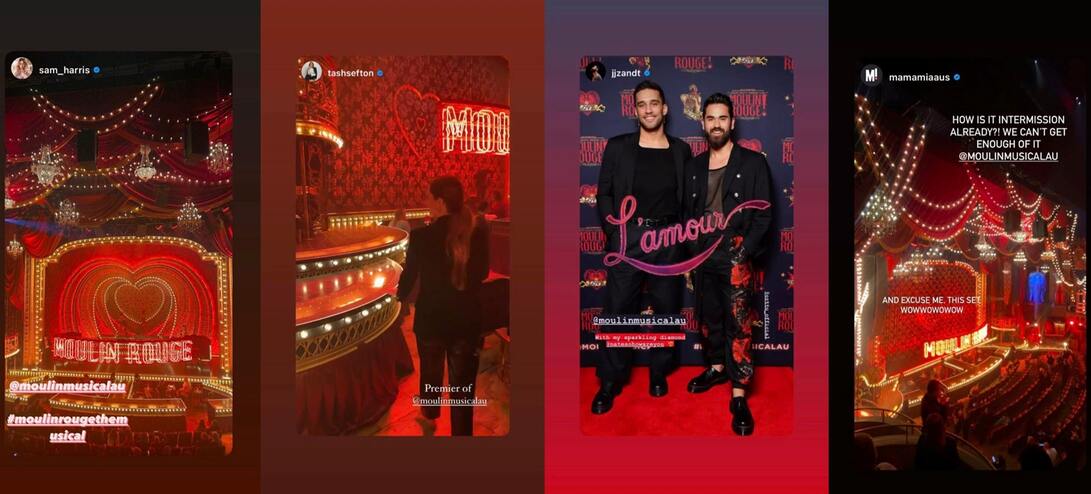
These influencers shared the set design and praised the event to their thousands of followers. And the Moulin Rouge Instagram account reposted and saved all these stories to their account.
The show had a sell-out season.
People trust and emulate influencers in powerful ways. If you get these influencers praising your event, many of their masses of followers will follow.
A note on content: people don’t want to be hammered with emails and texts with only minor updates. Most of the above content should be published on social media and your website. Save the emails and texts for major announcements (lineup, supporting act, “the reviews are in”).
Not everyone will engage with your content, and that’s fine. But what isn’t fine is having interested and eager audiences who have nothing to engage with.
These interested and eager people are your most valuable audiences. And it’s crucial you give them reasons to be excited, reasons to engage, and the feeling that they’re part of a community.
Summary #3 Content: You can’t leverage curiosity and cadence without content. Content is all the information and entertainment you publish about your event that isn’t the event itself. Use it as an educational opportunity, a marketing opportunity, and an anticipation-building opportunity. Give audiences something to engage with using curated playlists, personalized recommendations, event trailers, performer interviews, behind-the-scenes footage, and publicized premieres.
The curiosity gap isn’t just important in a direct ticket seller to customer relationship. Curiosity, intrigue, speculation—these are what get people talking to others, what get people posting online.
These are the fuel for word-of-mouth.
A massive 66% of eventgoers say their friends were the main reason they chose a particular event. This means getting one potential customer excited is a surefire way to get others excited.
And social media takes word-of-mouth to a new level. A Ticketbooth study of 100,000 Australian ticket buyers found 72% of them find out about events via Facebook.
Consider every fan a micro-influencer. And every social media post and story an advertisement for your event.
People are crucial to building anticipation for an event because anticipation rarely happens in isolation.
Have you ever had a party, or a project, or a live event that your friend, colleague, or spouse was super excited for?
That excitement rubs off on you. Excitement is a social phenomenon, and it’s crucial you connect excited audiences and show their excitement off.
Encourage & amplify user-generated content
User-generated content (UGC) is the content that’s produced by fans and customers. You should consider every event attendee a potential brand amplifier. And you should encourage these attendees by engaging with them.
UCG leverages social proof and fear of missing out (FOMO). It shows real people enjoying your events, rather than some rosy picture painted by a company looking to sell tickets.
That’s why 92% of consumers trust organic, user-generated content more than they trust traditional advertising. And 79% of people say user-generated content highly impacts their purchasing decisions.
Strategies to encourage UGC include:
- Competitions & giveaways
- Creating an event hashtag
- Resharing UGC from previous & current events
- Run a social media wall
- Create spaces set up for photos
- Ask fans for their best moments from the event
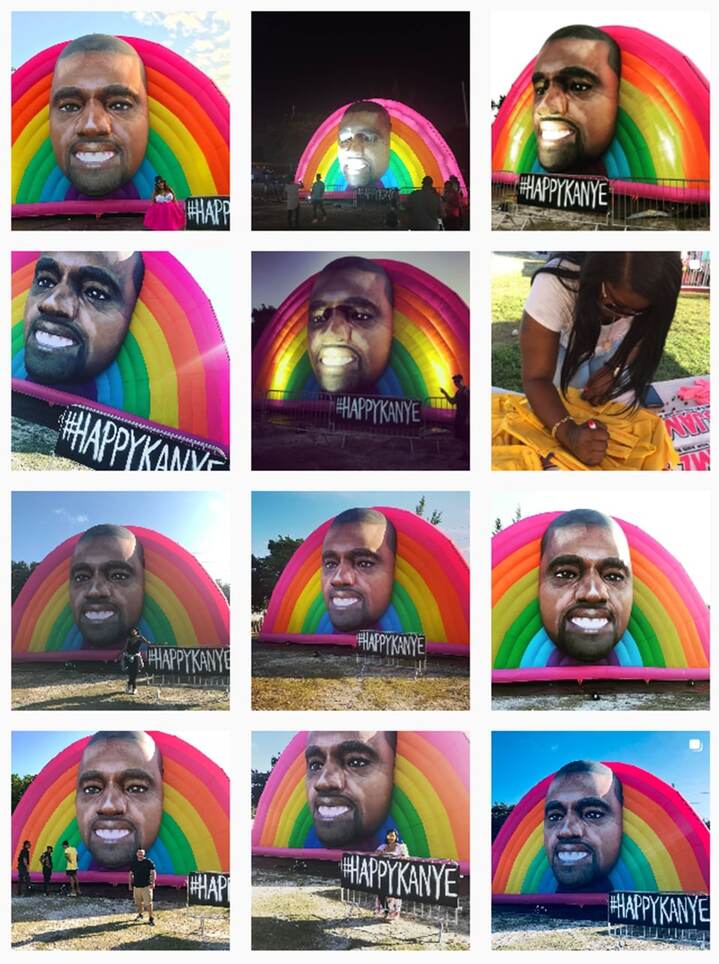
A giant inflatable of Kanye West’s face at Bestival Festival inspired thousands of social media posts with the hashtag #happykanye.
Meet fans where they are
Just like Hollywood, the ticketing world serves fans. Fans of artists, fans of sporting teams, fans of genres and talents. And the beautiful thing about fans, especially online, is that they form communities. These communities are primed audiences for digital advertising.
You can show ads for your comedy show specifically to local fans who follow Dave Chappelle and John Mullaney. You can have ads for your festival appear in subreddits about headlining artists. You can put sporting ads on sports forums—the options are endless.
These fan communities also offer important insights for your marketing material. What are people most fascinated by? Which posts get the most likes or reshares? Do they have their own fan-specific lingo or terminology you can embrace?
They’re also a treasure trove of artist content for you to leverage in your marketing material. Want clips from a tour to share with audience? A mashup of songs? A nice edit of an artist singing or dancing? A compilation of player highlights?
Fan communities have probably already made it. Request to use their edits and tag them and they’ll be excited about the exposure. And members of the community will see you’re one of them, you’re speaking their language.
Plus, by putting yourself on the radar of the fan community, your posts and content is more likely to be shared by them.
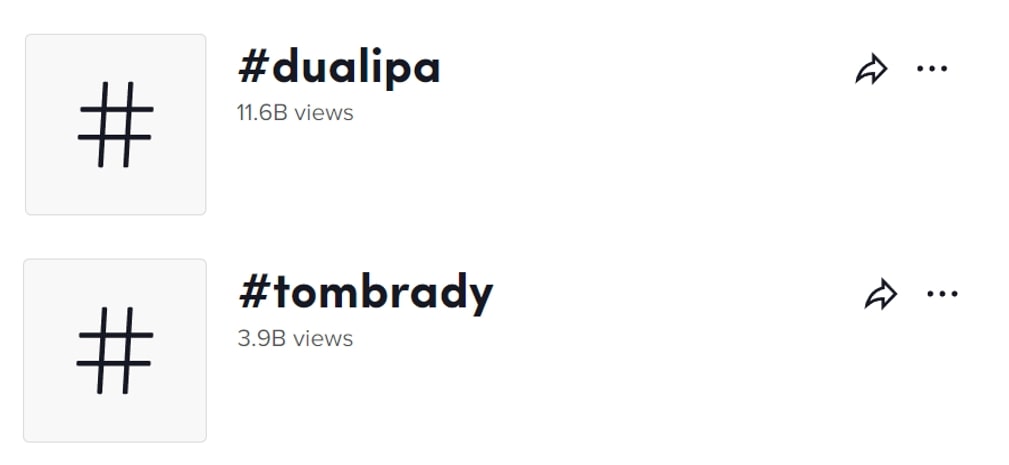
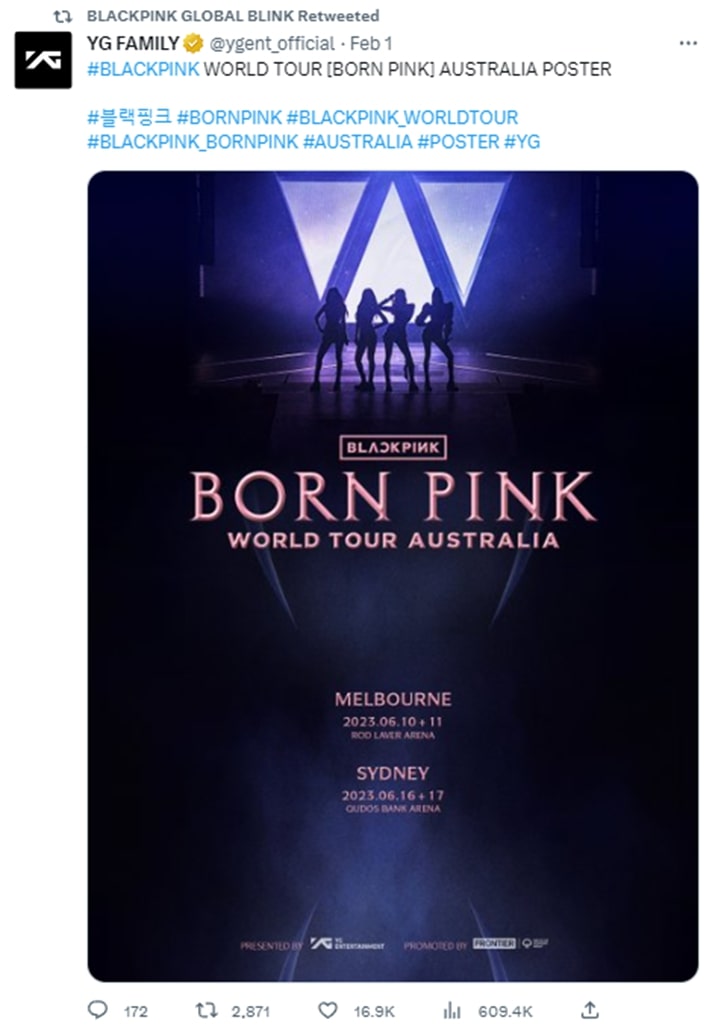

Engage & foster your own community
UGC can happen organically, but it works best when you show you care, when you engage with fans.
This could mean commenting, liking, and resharing their posts and stories; asking them who they want to see perform or who they’re most excited about; or rewarding and recognizing vocal fans.
People are more invested in that which they feel they’re involved in. So use your content to get them involved.
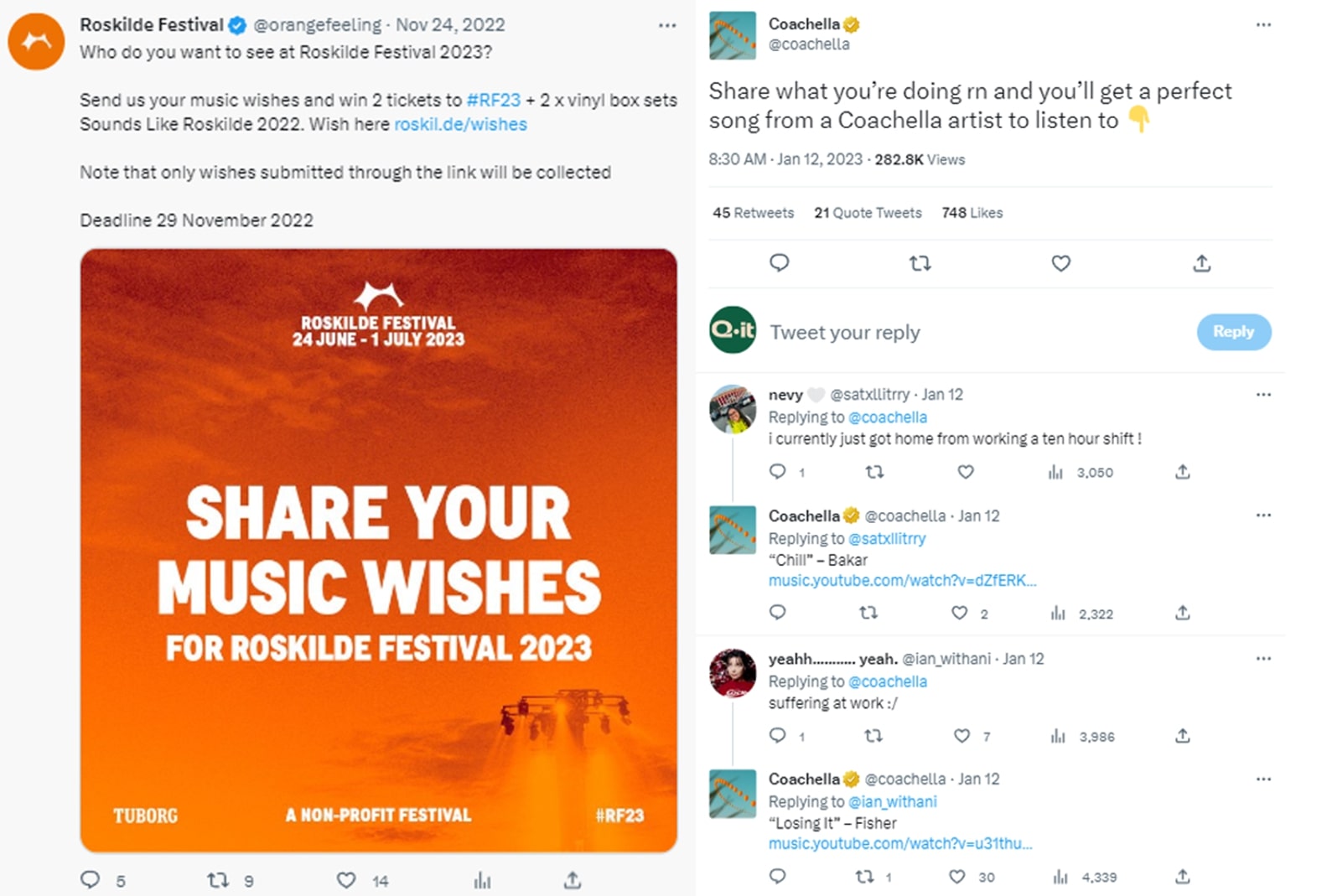
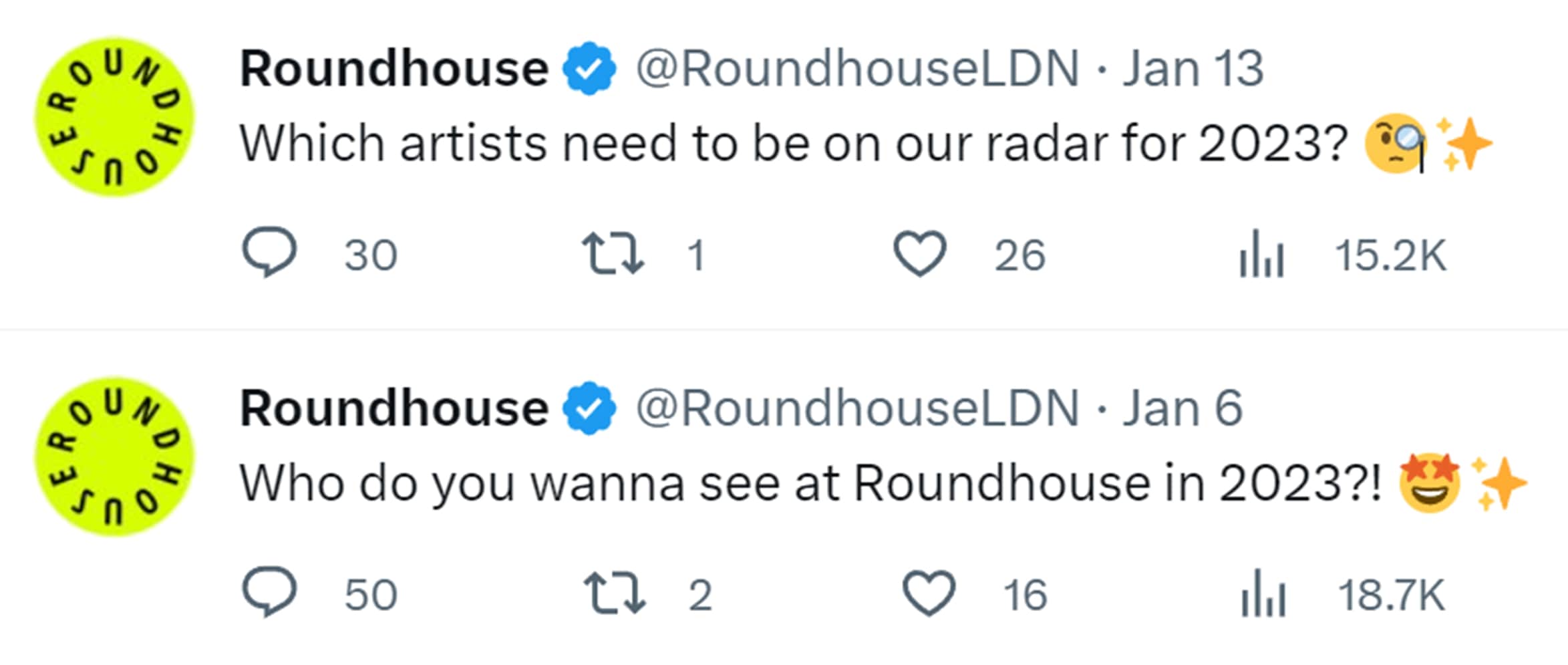
Summary #4 Community: Take advantage of the fact that you’re serving communities of fans and enthusiasts. Excitement and anticipation are contagious, so share and amplify fans’ excitement for the event. Speak directly to these communities and use their language. Encourage, reshare, and engage with user-generated content for authenticity. Meet fans where they are—either through targeted advertising, or by providing them content to engage with.
By leveraging Hollywood’s marketing principles, you can transform your “maintenance period” into an “anticipation period”.
You can create more consistent peaks in interest, for existing customers and prospective ones alike—and hopefully, you can make your event interest look like this:
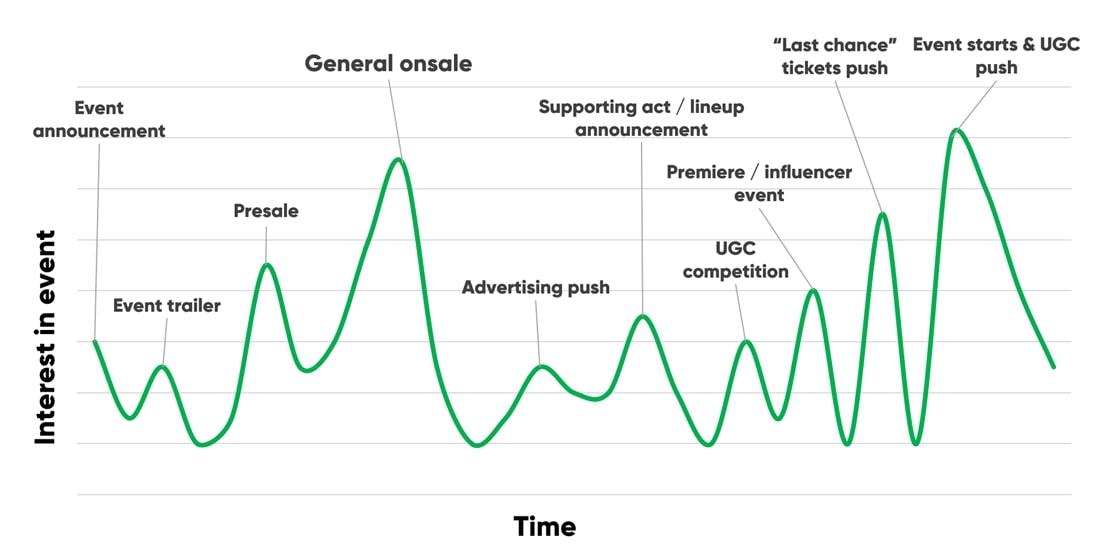
Stoking the flames of anticipation isn’t some deceptive marketing technique. You’re giving customers something to look forward to. This has the potential to improve their sense of wellbeing, increase the perceived value of their tickets, improve their experience of the event, and strengthen their memory of the event after the fact.
To achieve this, you need to focus on:
- Curiosity: give them reasons to be interested, tease & withhold exciting information.
- Cadence: play the long game, spread comms around your event out & don’t answer all their questions at once.
- Content: Educate audiences; give them reasons to engage & things to engage with.
- Community: Encourage & amplify your evangelists; leverage UGC for success.
